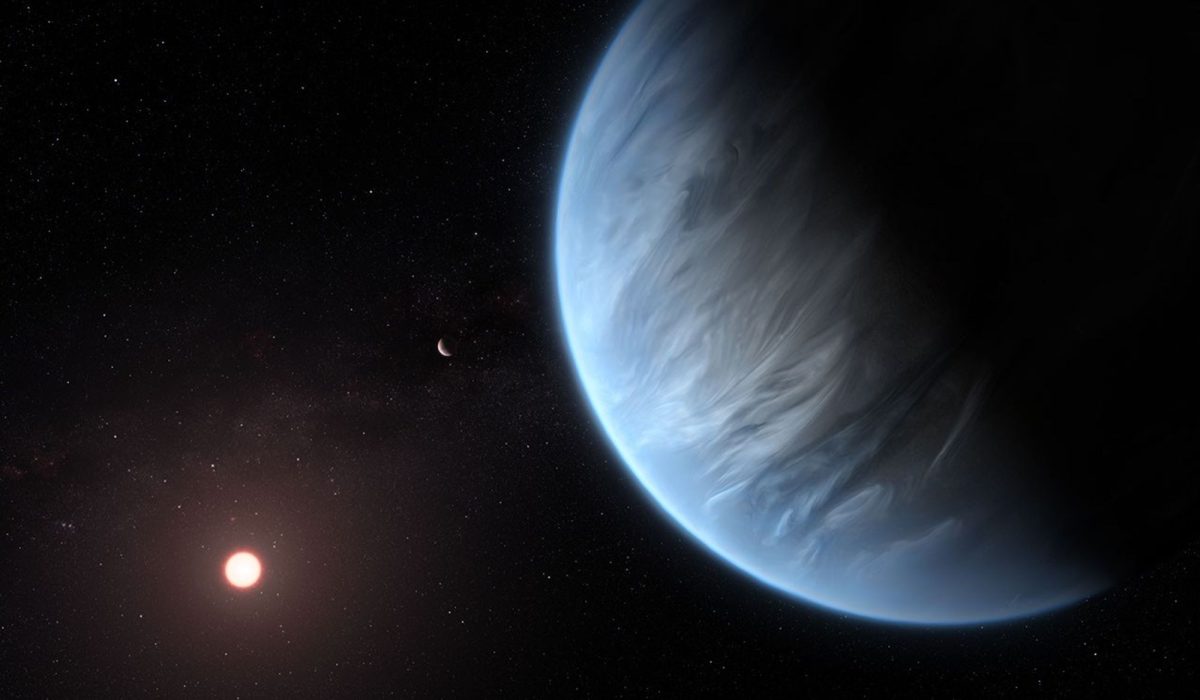In a groundbreaking discovery, astronomers have detected a potential sign of life on the distant exoplanet K2-18b, approximately 120 light-years from Earth. Using data from NASA’s James Webb Space Telescope (JWST), researchers observed an unexpected atmospheric signal—a gas called dimethyl sulfide (DMS), which on Earth is almost exclusively produced by living organisms, specifically marine algae. This finding, while not conclusive, is among the most compelling evidence to date in the search for extraterrestrial life
K2-18b, located in the constellation Leo, orbits a red dwarf star and is classified as a “hycean” world—a term used to describe exoplanets with vast global oceans and thick hydrogen-covered atmospheres. These characteristics suggest K2-18b may be capable of supporting life in ways that differ from Earth-like conditions.
The detection of DMS came after astronomers closely examined the light filtering through K2-18b’s atmosphere during a transit when the planet passed in front of its star from our perspective. Having passed through the atmospheric layers, that light carries spectral “fingerprints” of the gases it encountered. In this case, the fingerprints pointed toward DMS’s recognizable presence.
The excitement around this finding is tempered by scientific caution. While the presence of DMS is intriguing, it is not yet definitive proof of life. The signal was relatively weak, and while it was confirmed by additional observations using a different instrument on the JWST a year later, scientists are still working to rule out non-biological sources. This process of elimination is very important in astrobiology, as many molecules associated with life can also form through geological or chemical processes under certain conditions.
As technology improves and new data becomes available, scientists are hopeful that they’ll soon be able to answer some of these profound questions. Until then, the detection of a possible biosignature on K2-18b stands as a thrilling hint that we may not be alone in the universe.
















